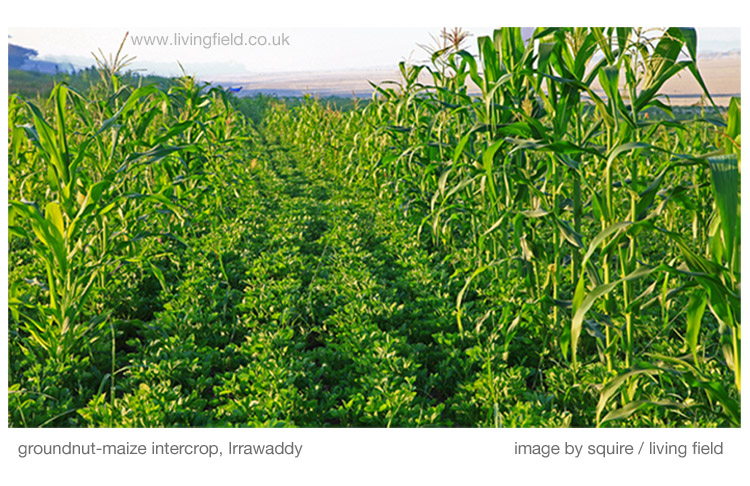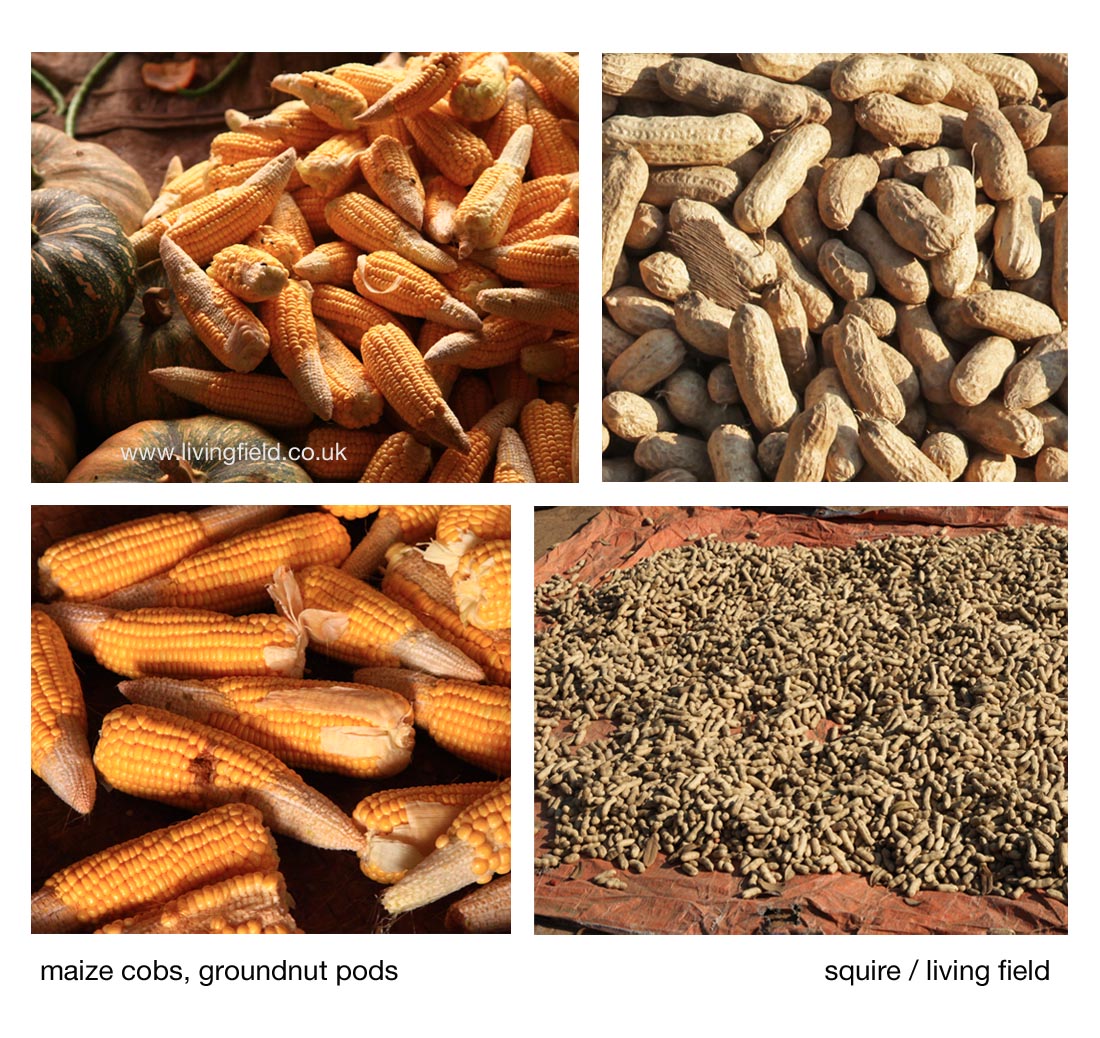Following a trail ….. starting with a blues song – cornbread, peas and black molasses – sung at the Dundee Jazz festival – and on to chain gangs, slavery and rural poverty, and the peculiar malnutrition caused by a maize-based diet, appearing as the debilitating condition pellagra, and then on to the discovery by Joseph Goldberger that pellagra was not an infectious disease but a dietary deficiency, a shortage of bioavailable niacin ….. and this trail leads to the question of what happens when maize became the staple diet, or at least a major part of it, as the crop spread to Asia and Africa from its origin in central America.
With maize Zea mays as the main corn (grain) and carbohydrate, there has to be other food to provide the missing vitamins – food such as groundnut Arachis hypogaea (usually named peanut in the UK) and other high-protein pulse crops, and fresh green vegetables. And it’s noteworthy that in parts of the tropics, maize is often grown along with pulses such as groundnut, and not just as patches side by side but in intimate mixtures, named intercrops when the two are grown in rows.
The spatial arrangement of the two crops probably matters little for the balanced diet, but the combination, when in rows as in the image above, increases the yield on at least one of them. So there are two products – maize and groundnut (peanut) – which together provide much of a healthy diet, and they yield more from an acre of land if grown together.
The groundnut-maize intercrop shown above was on the margins of the Irrawaddy river in Burma, probably growing on stored nutrients and water left behind as the river receded during the dry season. This example (and there is no one way to grow the two crops together) looked like a long thin ‘field’ of groundnut into which maize was planted in every fifth row.
Research elsewhere on groundnut-maize intercrops shows that in this configuration, the maize yield is ‘free’ or extra, in that it does not suppress the yield from the groundnut.
The images above show maize cobs on sale at a local market and a groundnut harvest spread out in a cloth in the sun to dry. Each pod contains three or four seed (the ‘nuts’ in peanut). A month or two earlier, they were on the plant, but unseen, buried just under the soil, an amazing adaptation that helps to protect the plant’s seeds while they fill and mature.
There are other ways to get essential vitamins in a maize-based diet, but the maize-groundnut mixed crop offers much towards a balanced diet and gets more from the environment than either crop grown alone.
Further
The article Mixed cropping in Burma gives more on crop mixtures, and scientific reference to pulses.
For more on the use of legumes in food: Botanists in the kitchen
Links on this site: Cornbread, peas and black molasses, Feel the pulse
Contact: geoff.squire@hutton.ac.uk


